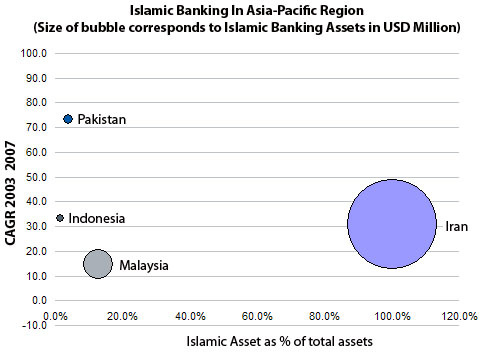Rise of Islamic Banking in the Asia-Pacific Region
Abstract
Currently, Islamic banking assets in the Asia-Pacific region account for about US$450 billion, which represents 60 percent of global Islamic banking assets.
A new Celent report, Rise of Islamic Banking in the Asia-Pacific Region, examines the recent growth of Islamic banking in major countries in the region. The last five years have seen overall development in the economy, resulting in a faster growth of GDP per capita. This is due to the overall economic growth in the region, along with the existing Muslim population and the recent movement of petrodollar investments in the Middle East from Western countries to Asia.

"Because Islam is the dominant religion in most of these markets, banks are intensifying competition to offer Islamic banking products to capture the Shari’ah customer base," says Prathima Rajan, Celent analyst and author of the report. "In a country like Iran, the entire banking system has become Shari’ah compliant, offering only Islamic banking products and services. Other countries like Malaysia, Indonesia, Pakistan, Bangladesh, Thailand, and Brunei have dual offerings with both conventional and Islamic banks operating side by side."
Islamic banking in Bangladesh has low penetration, leaving room for development. While Islamic banking has achieved better growth rates in Brunei, markets such as the Philippines, Singapore, and Thailand remain very small in terms of asset size. These countries have a relatively small Muslim population (less than 20 percent), and Islamic banking is either in a nascent stage or is slowly catching up.
The report analyzes the market maturity of major Islamic banking markets in the Asia-Pacific region by evaluating the level of Islamic banking penetration, market maturity by product offerings, competition, and scope for entrants. It also highlights the challenges faced by Islamic banking in general and by specific markets.
The 44-page report contains 33 figures and five tables. A table of contents is available here.
of Celent's Retail and Business Banking research service can download the report electronically by clicking on the icon to the left. Non-members should contact info@celent.com for more information.

